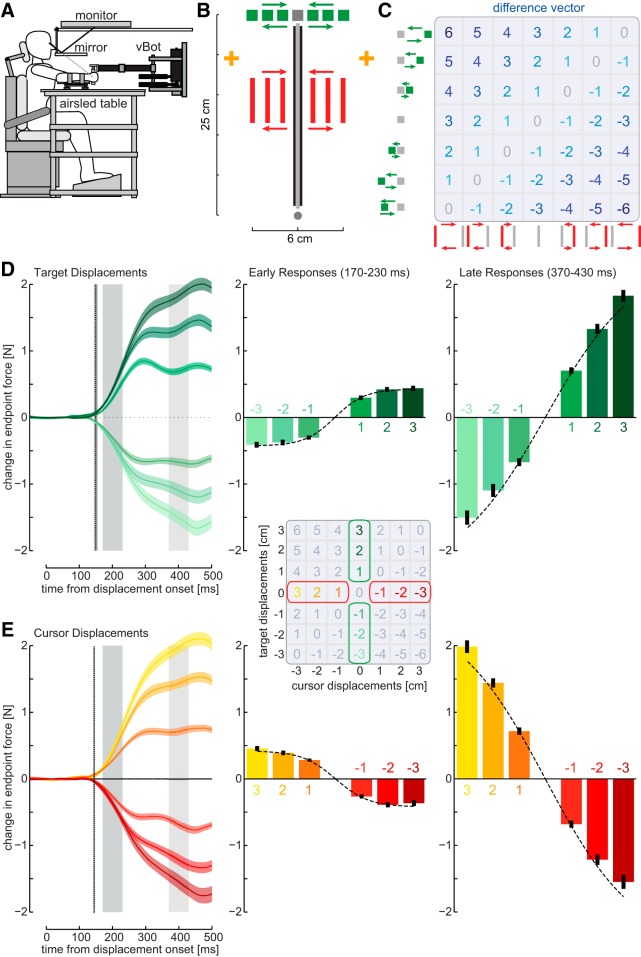Figure 1.
Methods and responses to isolated target or cursor perturbations. A, Subjects made reaching movements while grasping a planar robotic manipulandum. Visual feedback of targets and hand position (cursor) were provided in the plane of the reach via a mirror. B, On random probe trials, the cursor, the target, or both were perturbed laterally by one of seven distances for 250 ms while the physical hand position was constrained by a mechanical channel to the straight line between the start and final target. Subjects fixated visual gaze to the fixation cross (yellow), which signaled the start of movement cue by changing color. The presentation side (right or left) for the fixation cross varied from block to block in the experiment. C, The combination of seven possible target perturbations (green) and seven possible cursor perturbations (red) gave rise to 49 separate conditions where the diagonals had identical difference vectors. D, Left, Mean force responses (solid line) and SEM (shaded region) across all subjects to isolated target displacements plotted with respect to the time of displacement onset. The vertical dotted line indicates the mean (±1 SD) of the response onset time. The mean force responses were averaged over an early interval (170–230 ms, dark gray bar, middle) and a late interval (370–430 ms, light gray bar, right) for comparison across conditions. Error bars indicate ±1 SEM. The mean force responses were fit with a logistic function to the target responses of each time interval separately. E, Mean force responses to isolated cursor displacements analog to D.

